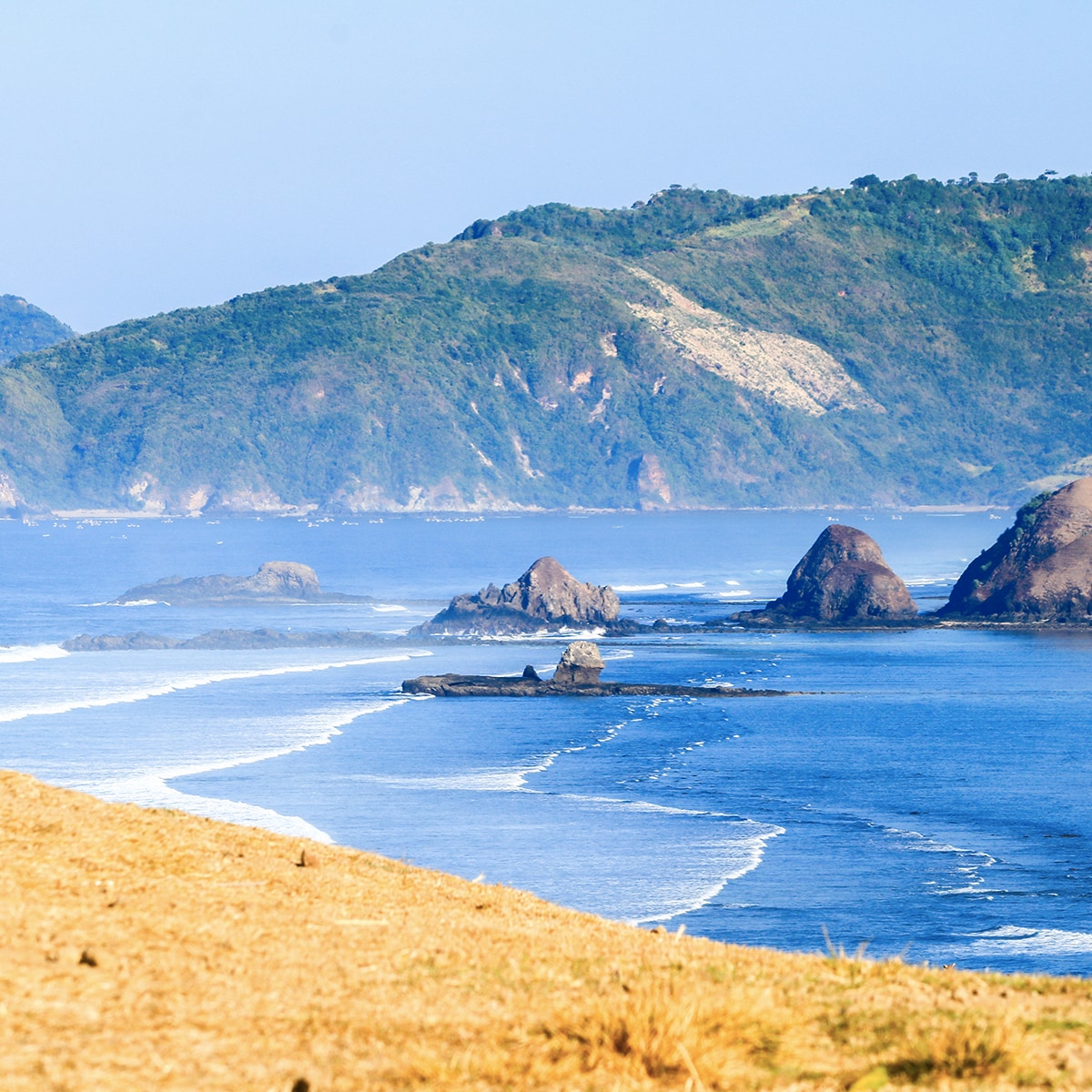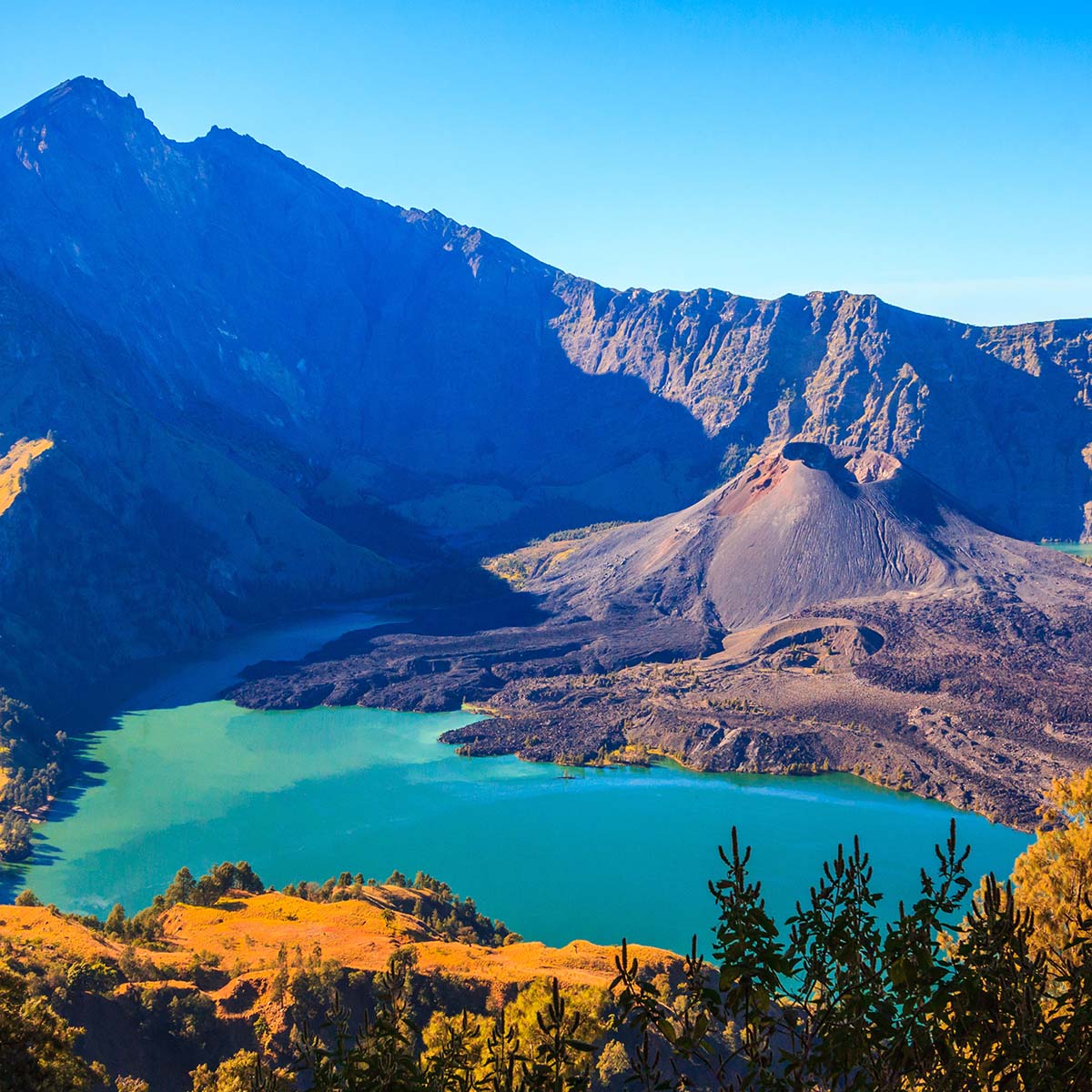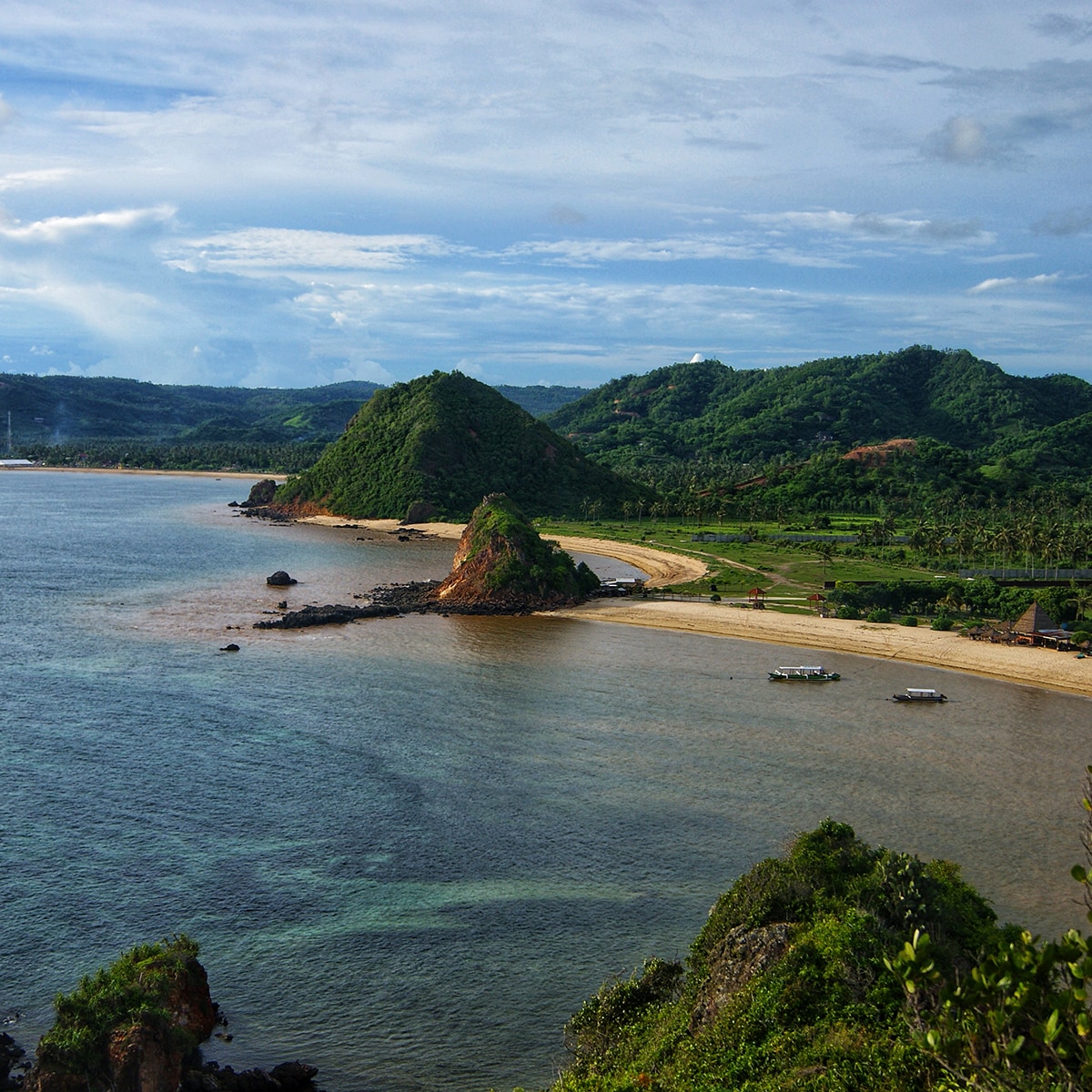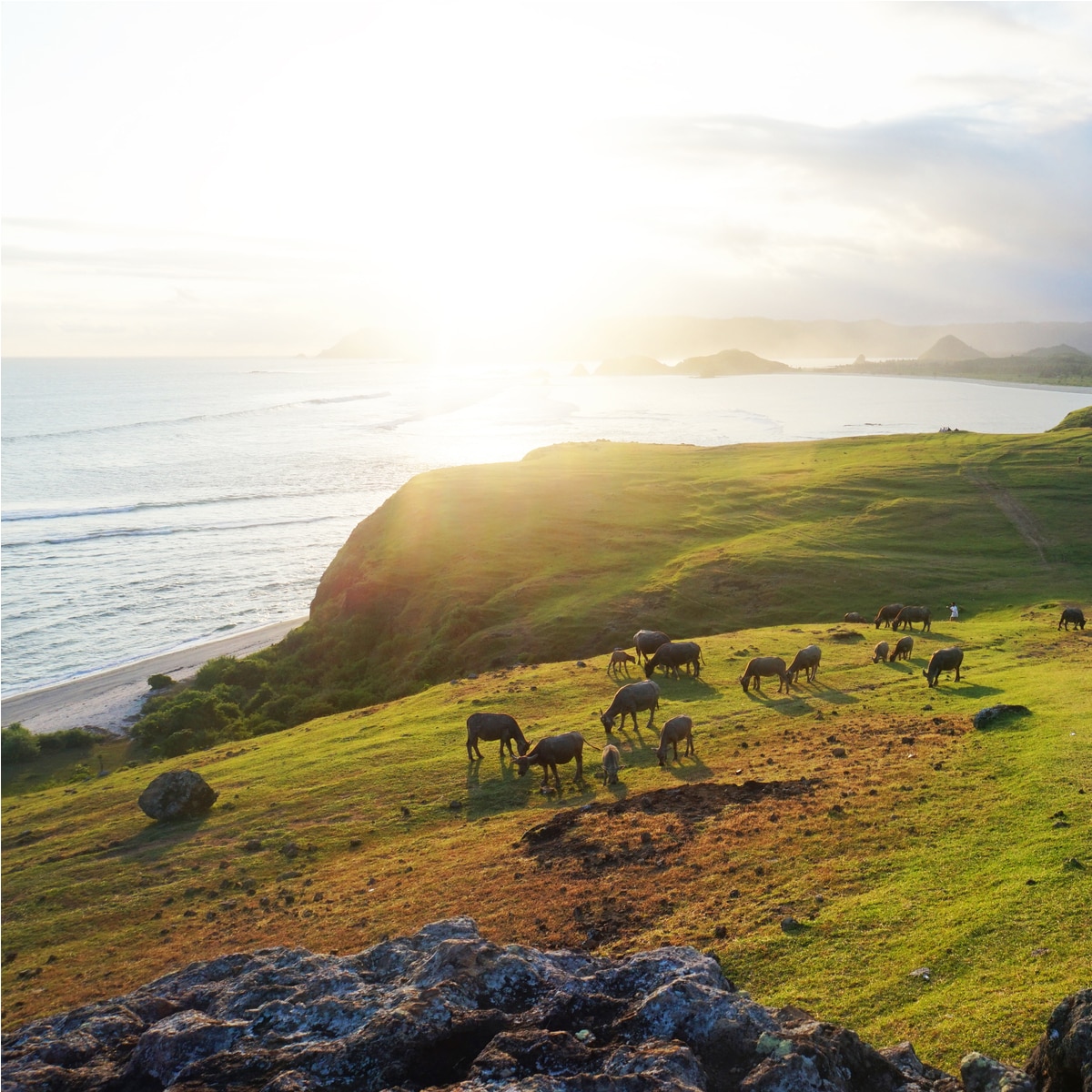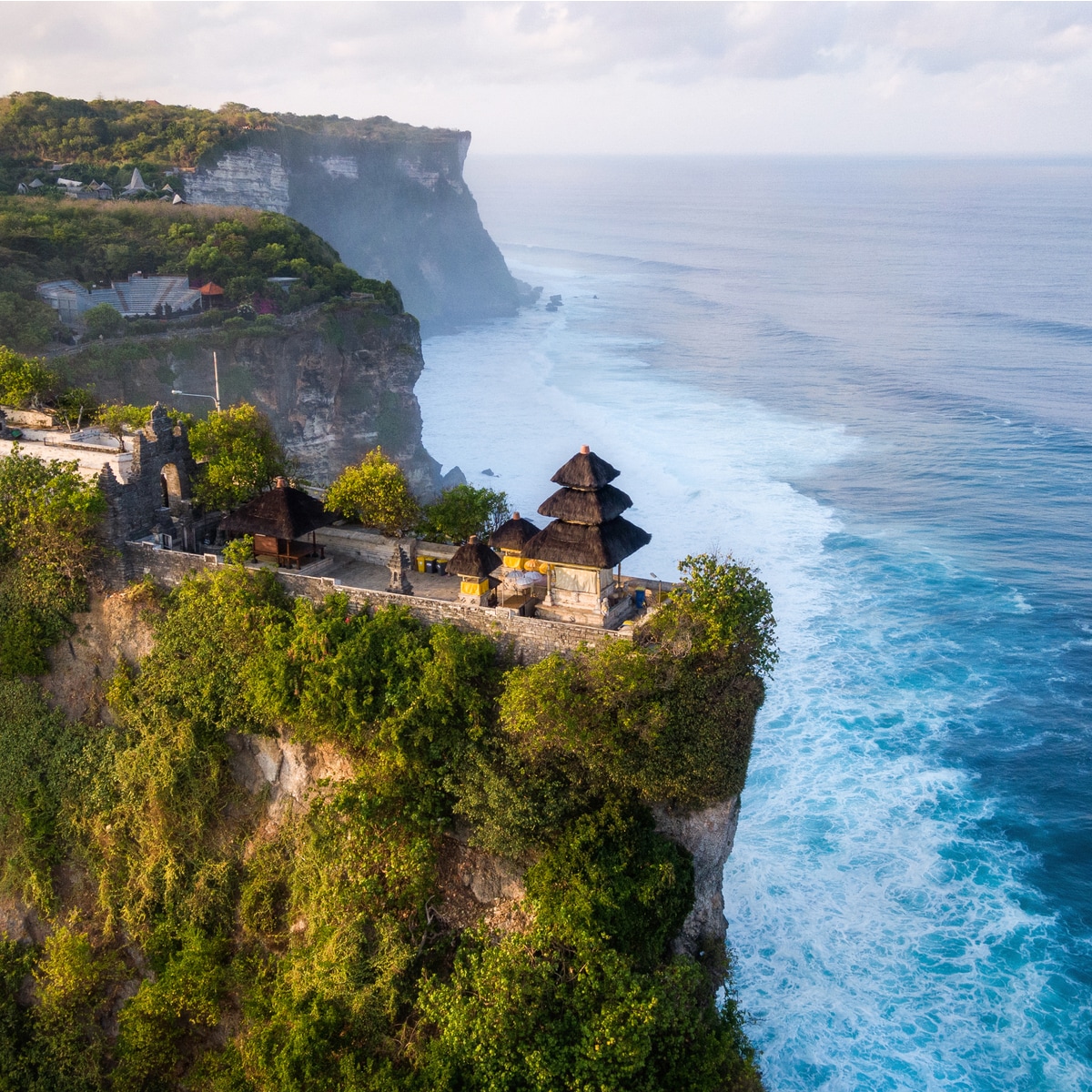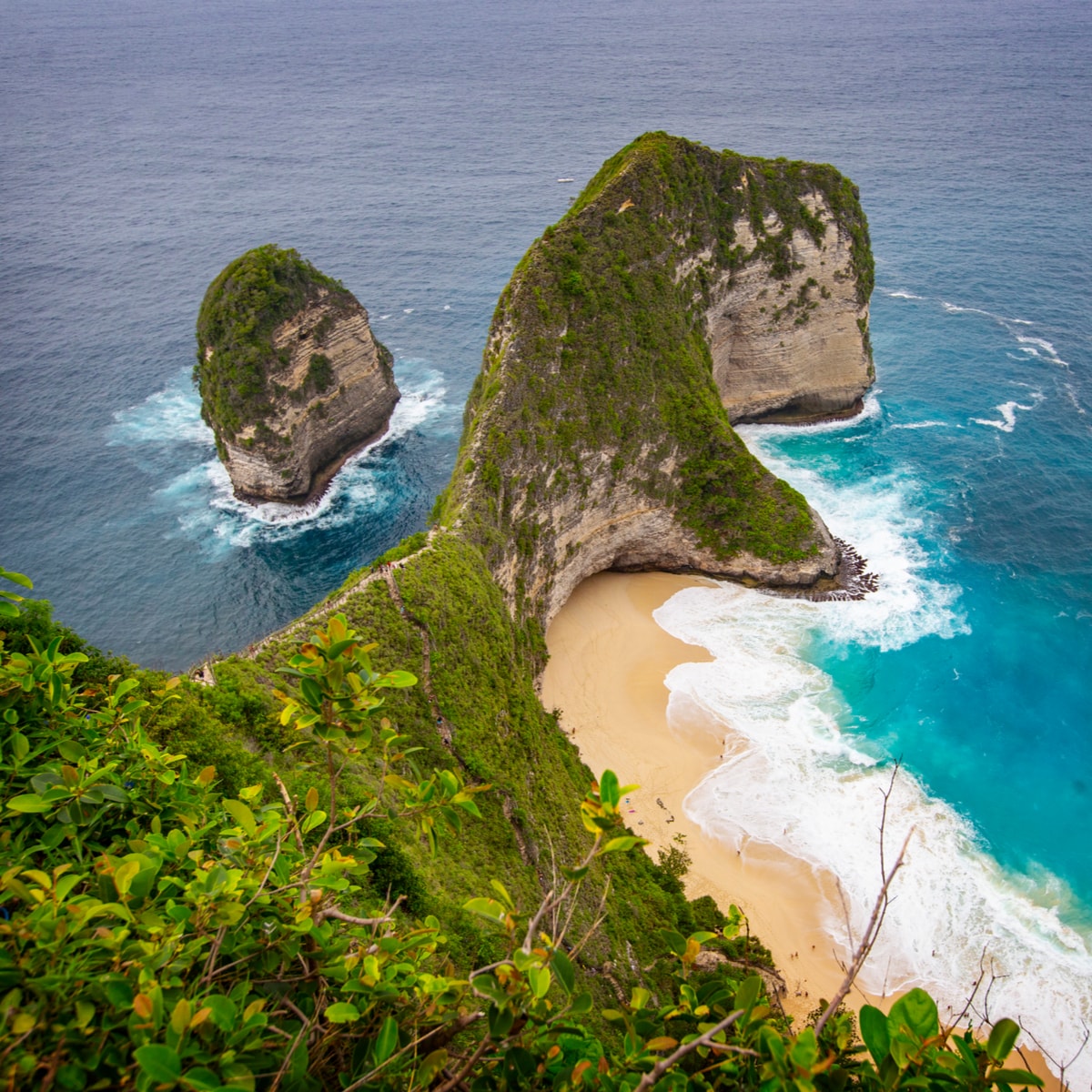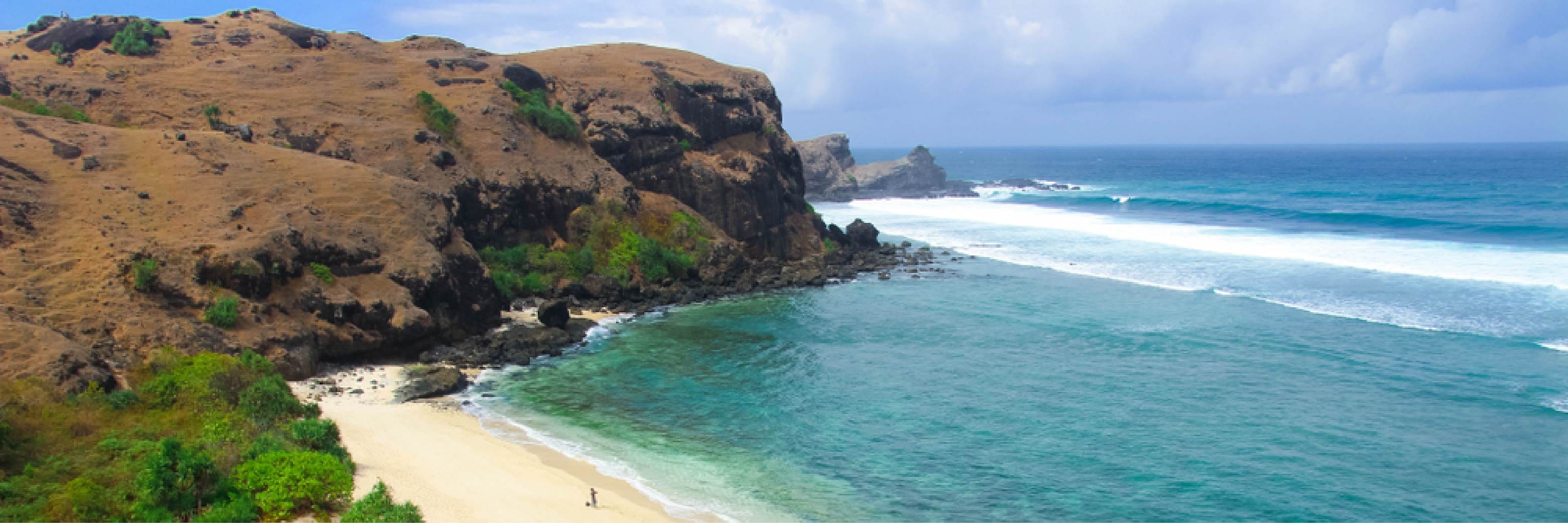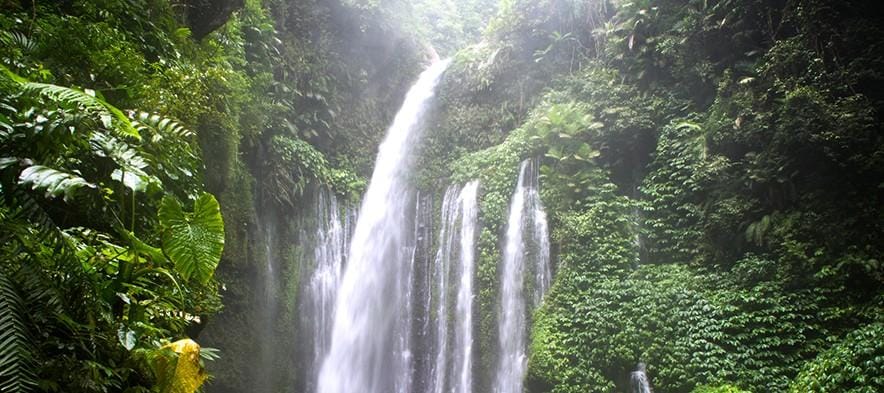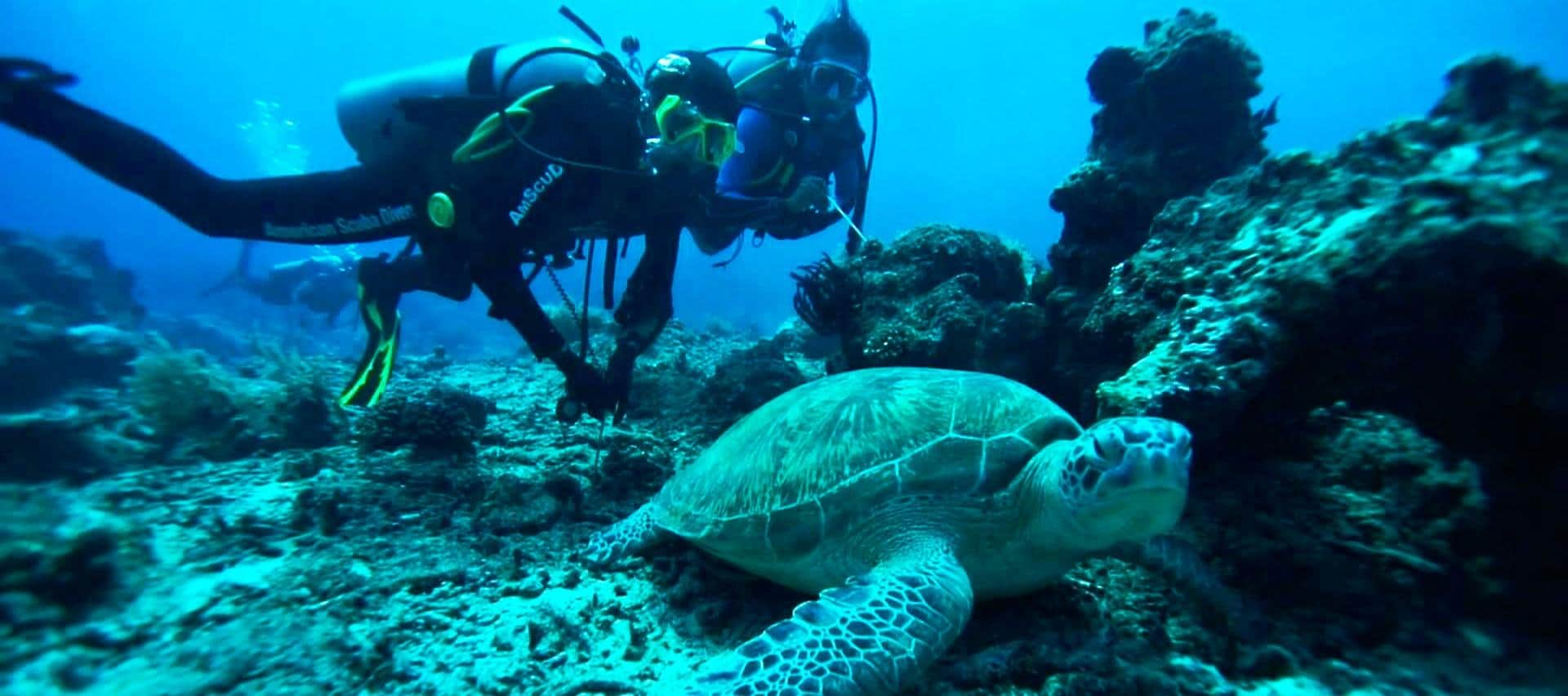Danau Segara Anak is a volcanic lake formed in the caldera of Mount Rinjani on over 2,000 meters above sea level. The lake spans across an area of 11 square kilometers, and reaches depths up to 230 meters. Danau Segara Anak is located on the west side of Mount Rinjani in the village of Lawang Sembalun in Lombok, East Indonesia. The mystifyingly blue colour of the lake gives Segara Anak its name: Small Ocean.
The trek from the Senaru Village, and through the crater to Danau Segara Anak takes two days and a night. It begins with a hike through a lush, tropical rainforest, and up the mountain to the rim of the crater. The trek to the Senaru rim is a challenging climb up steep terrain and high cliffs, but the exhaustion is well rewarded by the breathtaking panoramic view of the sun setting over Mount Rinjani, Bali and the Gili Isles on the horizon, and the dazzling blue waters of Segara Anak glistening hundreds of meters below. The top of the crater is a popular camp site for both foreign and domestic tourists on this journey to spend the night. It is advisable to set a morning alarm so as not to miss the magnificence of dawn from atop Rinjani.From the crater’s rim, it is a sharp descent of about 600 meters to Danau Segara Anak.
Part of Segara Anak flows down a steep ravine forming one large waterfall and several smaller ones. There are also four natural hot springs in the lake which are said to hold magical healing powers, and many make the climb solely for medicinal purposes.
Despite its high altitudes, taking a dip in the lake is not as cold as one might imagine. 2,010 meters above sea level, the surface water of the lake is unusually warm for such heights, at about 20-22 degrees Celsius—well above the mountain’s “room temperature,” which is about 14-15 degrees Celsius.
Between 2008 and 2009, researchers of Volcanology and Geological Hazard Mitigation as well as UniversiteLibre de Bruxells conducted a geochemical and thermodynamic study on Segara Anak. The tests showed several leaks in the volcanic system of Gunung Baru; the cone in the center of the lake. These leaks from the magma chamber seep a large supply of hot water into Segara Anak, indicating a direct relationship between volcanic activity and the lake’s high temperature. The geochemical composition of the hot water showed a number of elements such as chloride, sodium, potassium, and sulphate. Although rich in elements, rainwater that enters the lake assists in thinning its chemical content. Segara Anak also maintains excellent circulation, and is therefore not harmful to life.
Lake water circulation takes place when the density of the water is higher at the surface than at the base. Rainwater has a higher density than the hydrothermal water, and therefore moves downward, while waters from the hydrothermal vent move up. This is an on-going process providing well-mixed water and bringing the acid level of the lake to neutral—suitable for breeding fish.
In 1969, volcanologists from the Directorate of Geology, (London,) examined the lake and recommended the cultivation of fish. At that time, there were no fish in Segara Anak. In 1985, the Nusa Tenggara Barat provincial government finally began breeding fish in the lake. The fish bred rapidly and the lake is now home to millions of tilapia and carp, making Segara Anak not only a popular spot for fishing, but some locals of the area even make a living from this.
In the 1980’s, the areas surrounding Segara Anak pulsated with wildlife. Grouse, hornbill, and barking deer thrived around the lake. Several species of monkey could be found in the forests, including the rare black ebony leaf monkey, and the black crested macaque, indigenous to Indonesia. But human intervention has changed the ecology of the lake. With more and more people climbing up the mountain and into the lake, more and more species have begun to disappear. Initially, people only caught fish, but then grouse, which soon led to deer hunting as well. Now few grouse remain, and the deer are no longer found along the route. It is estimated that only a hundred or so remain.
In 1998, Danau Segara Anak was immortalized in paper money on the ten thousand rupiah bill.
Like other crater lakes around the world, Danau Segara Anak was born of a violent past, celebrates a brilliant present, and has the potential to lead to a catastrophic future. Yet we remain fascinated by its origin, splendour and unique existence.
No clue what's next after Mount Rinjani? Click here and you'll know.














